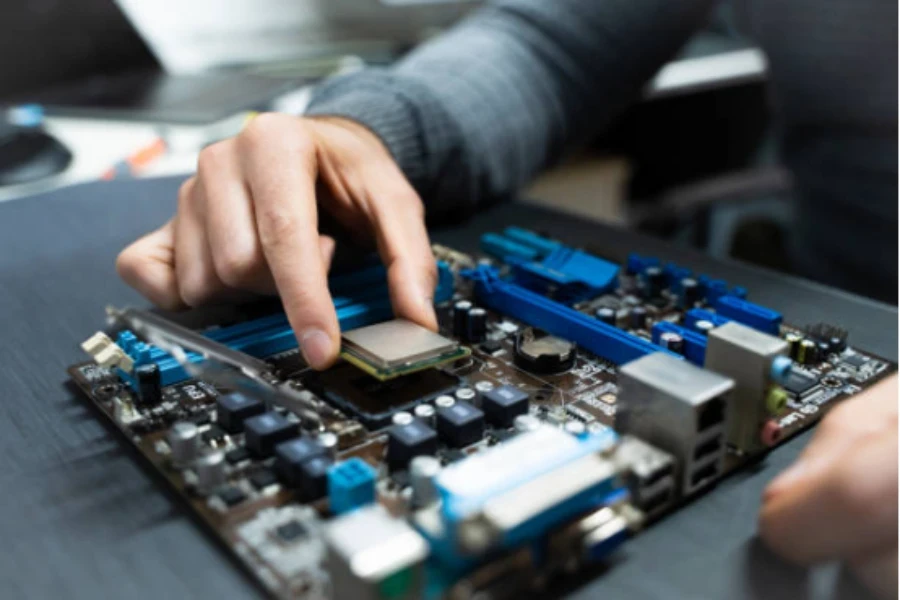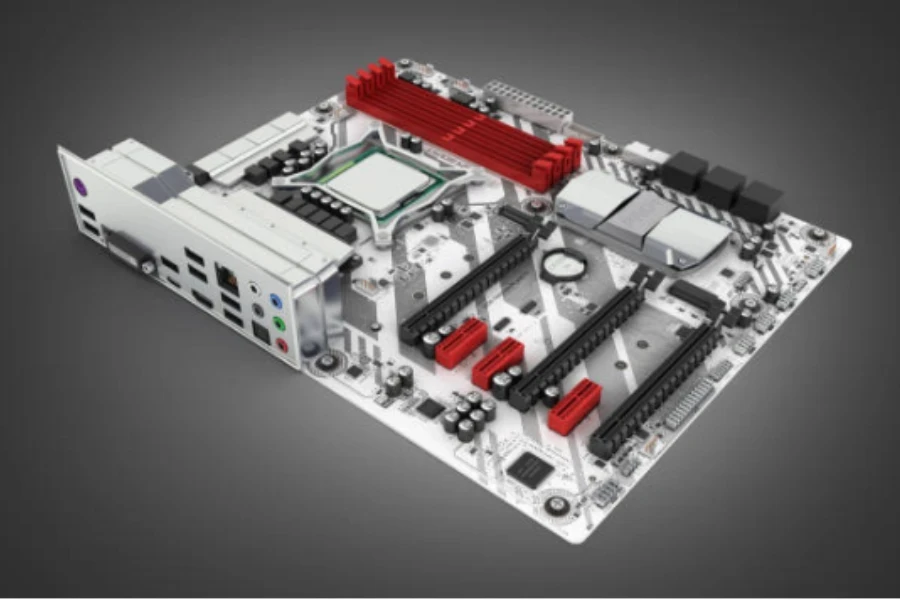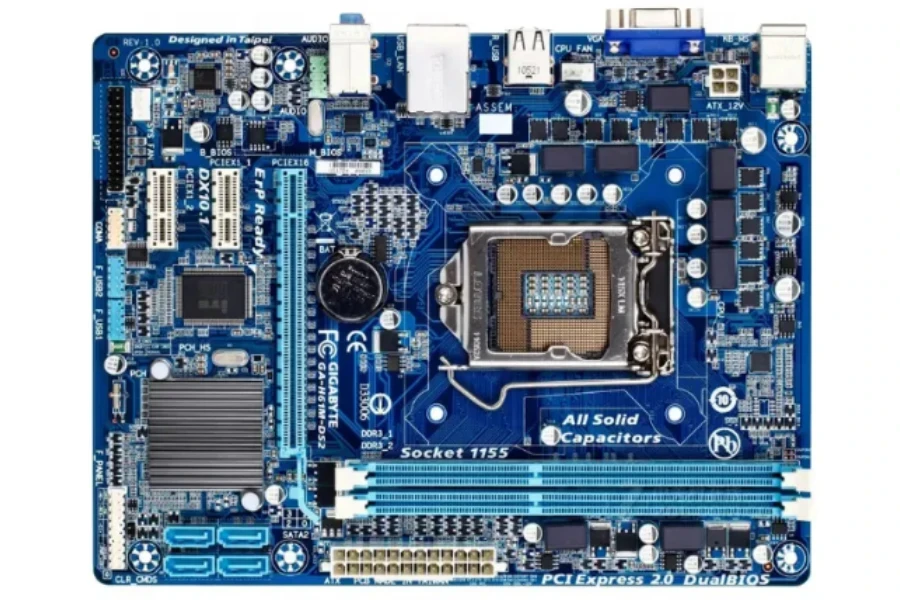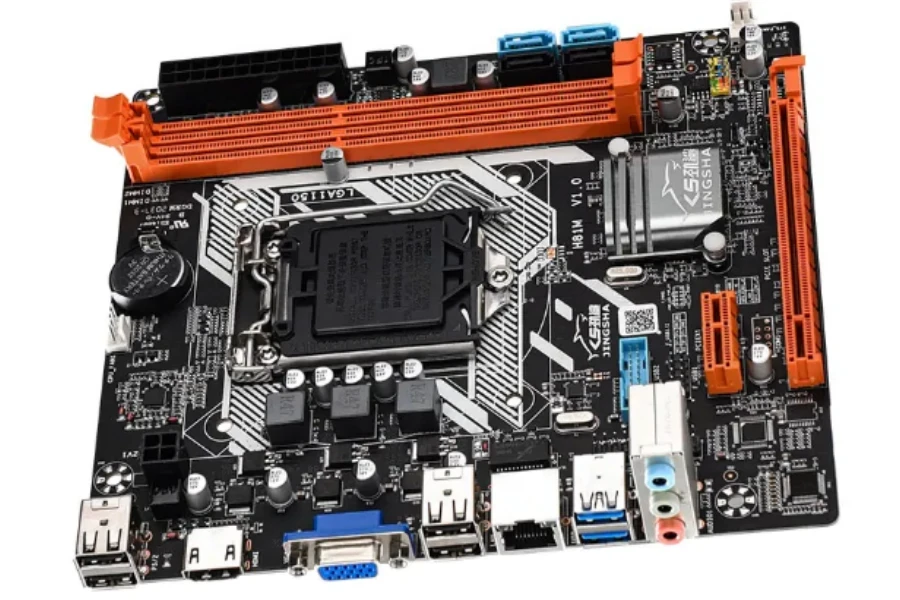The motherboard landscape undergoes a transformative shift. As the backbone of every computing device, these intricate boards dictate the performance, scalability, and adaptability of systems. With rapid technological advancements, motherboards now offer enhanced compatibility, robust features, and a spectrum of options tailored to diverse needs. From supporting powerful processors to facilitating seamless connectivity, they play a pivotal role in optimizing operational efficiency. For businesses, understanding these nuances becomes imperative, ensuring that investments align with both current demands and future trajectories. It’s a dynamic era where the right motherboard choice can significantly amplify productivity and innovation.
Table of Contents
Pulse of the global market
Deciphering product selection
Spotlight on top motherboard innovations
Conclusion
Pulse of the global market

Surging global demand
The motherboard, often considered the backbone of any computing device, has seen a surge in demand, especially with the rise of compact, high-performance PCs. Mini-ITX motherboards, in particular, have gained immense popularity due to their blend of performance, versatility, and compact form factor. As 2024 unfolds, the global motherboard market, valued at a staggering USD 5987.92 million in 2022, is poised for a growth trajectory with a CAGR of 2.77%. These motherboards cater to a variety of needs, from gaming rigs and home theater PCs to portable workstations. The demand is driven by the need for powerful yet compact PC solutions, especially in spaces where traditional setups might be cumbersome.
Market share insights
The global motherboard landscape is witnessing a tug-of-war between two tech giants: Intel and AMD. Intel, with its 62.7% market share in x86 computer processors, continues to be a formidable force. However, AMD is not far behind, capturing 35% of the market in 2023. This dynamic interplay between the two titans is shaping the motherboard choices for businesses and consumers alike. The data underscores the importance for retailers to stay abreast of the latest market trends and align their product offerings accordingly. With Intel and AMD jostling for supremacy, the motherboard market promises to be a dynamic and evolving space in the coming years.
Tech on the rise

In the realm of motherboards, technology never remains stagnant. Cutting-edge motherboard technologies are continually emerging, setting new standards for performance and functionality. One notable advancement is the support for DDR5 RAM, which offers faster speeds and improved efficiency. Additionally, advanced connectivity options, such as PCIe Gen 5 interface, have revolutionized data transfer speeds, with some SSDs offering speeds of over 10,000Mbps. Furthermore, features like Wi-Fi 6E, Thunderbolt 4, and Bluetooth 5.3 are becoming standard in many motherboards, ensuring that devices remain connected and perform at their best.
It’s evident that the motherboard market is evolving rapidly, with technological advancements driving demand and shaping future trends. Staying updated with these trends is crucial for any business professional or retailer in the industry.
Deciphering product selection

In the vast realm of computer components, the motherboard stands as the central hub, connecting and communicating with every other part. Making the right choice in motherboard selection is paramount for optimal performance and future upgrades.
Processor harmony
The motherboard’s compatibility with processors is the first checkpoint. Two major players dominate the market: AMD and Intel. The latest sockets, AM5 for AMD and LGA1700 for Intel, support the Zen 4 and Alder Lake & Raptor Lake generations, respectively. It’s essential to ensure that the chosen motherboard aligns with the desired CPU, as mismatched components can lead to performance bottlenecks or incompatibility issues.
The chipset realm
The chipset acts as the motherboard’s brain, influencing performance and feature availability. For instance, Intel’s Z690/Z790 chipsets cater to high-end models supporting Alder Lake and Raptor Lake CPUs. On the other hand, AMD’s X570/X470 and X670E/X670 chipsets are tailored for Ryzen 5000 and Ryzen 7000 series CPUs, respectively. The choice of chipset can dictate the motherboard’s overall capabilities, making it a crucial consideration.
Choosing the form
Motherboards come in various sizes, each suited for different needs. E-ATX is the largest, ideal for high-end builds requiring multiple expansion slots. ATX is the standard size, offering a balance between size and features. Micro-ATX is a tad smaller, and Mini-ITX is designed for compact builds. The choice here depends on the intended build size and component requirements.
Connect and expand
Modern motherboards are equipped with a plethora of ports and slots. From DDR4 and DDR5 RAM slots to PCI Express lanes for GPUs and other expansion cards, the options are vast. Notably, the transition from DDR4 to DDR5 is gaining momentum, with DDR5 expected to become the norm soon. Additionally, the presence of M.2 slots for faster SSDs and various USB ports, including the latest USB Type-C, adds to the motherboard’s versatility.

Balancing cost and capability
While it’s tempting to opt for the most expensive motherboard boasting a myriad of features, it’s essential to strike a balance. High-end motherboards are indeed feature-rich, but not every build requires such extravagance. For instance, a midrange gaming PC might not benefit significantly from a top-tier motherboard designed for AI workflows or high-end gaming. It’s about finding the sweet spot between the necessary features and budget constraints.
In the ever-evolving tech landscape, staying updated with the latest trends and making informed decisions can pave the way for a robust and future-proof build. The motherboard, being the heart of any computer, deserves careful consideration and research.
Spotlight on top motherboard innovations
AMD’s crown jewels
The motherboard landscape for AMD processors has seen a significant evolution, with several standout models capturing the attention of industry experts. Leading the pack is the ASUS ROG Strix B550-E Gaming, a motherboard that has garnered praise for its robust performance and feature set. Its market reception has been overwhelmingly positive, with many highlighting its PCIe 4.0 support and Wi-Fi 6 capabilities. Another notable mention is the MSI MPG B550 Gaming Edge WiFi, which, according to Digital Trends, offers a balanced blend of price and performance. Its dual M.2 slots and extensive USB connectivity have made it a favorite among many.
Intel’s game-changers
For Intel processors, the motherboard market is equally competitive. The ASUS ROG Maximus XIII Hero stands out as a flagship model, boasting features like Wi-Fi 6E and robust overclocking capabilities. Its design aesthetics and build quality have set it apart from its competitors. Another significant player in this space is the Gigabyte Z590 Aorus Master. This motherboard is recognized for its advanced thermal design and triple M.2 slots, making it a top choice for those seeking performance and reliability.

Economical wonders
While high-end motherboards often steal the limelight, there are several models that offer exceptional value without compromising on features. The MSI MAG B460 Tomahawk, for instance, provides a compelling package at an affordable price point. With its dual M.2 slots and ample USB connectivity, it caters to a wide range of users. Another economical marvel is the ASRock B460 Steel Legend. Its unique design and feature set, combined with its competitive pricing, make it a sought-after option for those on a budget.
For the aficionados
The premium segment of the motherboard market caters to a niche audience of tech enthusiasts. These motherboards are often characterized by their cutting-edge features and impeccable build quality. The ASUS ROG Crosshair VIII Hero (Wi-Fi) is a testament to this, offering a plethora of features like PCIe 4.0 support and a comprehensive cooling solution. Another gem in this category is the MSI MEG Z490 Godlike. Its OLED display and dynamic dashboard have made it a favorite among tech aficionados. These motherboards, while on the pricier side, offer an unparalleled experience for those who demand the best.
The motherboard market, as evident from the above, is diverse and caters to a wide range of needs. From economical options to premium offerings, there’s something for everyone. The innovations and advancements in this space continue to shape the future of computing, ensuring that businesses and professionals have access to the best tools for their tasks.
Conclusion
The motherboard market in 2024 presents a tapestry of innovation, catering to diverse needs from economical wonders to premium masterpieces. With AMD and Intel offering standout models, businesses have a plethora of choices to drive their operations forward. The emphasis on advanced connectivity, chipset performance, and processor harmony underscores the industry’s commitment to delivering top-tier solutions. As the technological landscape evolves, staying abreast of these motherboard trends becomes paramount for businesses aiming to harness the full potential of their computing resources. The journey ahead in the motherboard realm promises exciting opportunities and advancements, shaping the very core of future computing.



